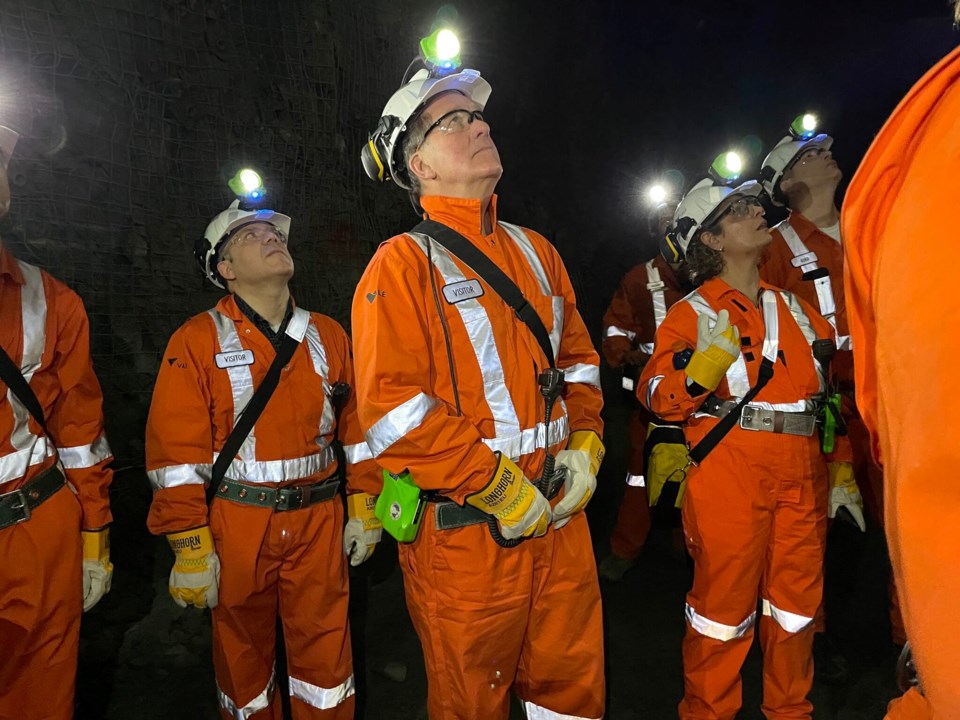Northern Ontario is shaping up to be a high-tech minerals grocery store to the world.
The northwest and the Timmins area has become an exploration hot bed for lithium, nickel, platinum group metals and other raw materials that international automakers and digitalcompanies want secured in making the transition to zero-carbon technologies.
Recognizing a massive manufacturing opportunity, the Ford government is out to update Ontario’s Mining Act and make it more industry-friendly, particularly when it comes to faster permitting times to put new mines into production.
The province rolled out the first of an upcoming raft of changes to the Act on March 2 that will ultimately will create a homegrown mines-to-electric vehicle (EV) plant supply chain.
The Ford government laid out the groundwork in 2022 with its Critical Minerals Strategy that has formed its investment attraction strategy resulting in a slate of EV automaker plant announcements in southern Ontario.
Northern Ontario and its abundant mineral resources are key to feeding those plants with battery-grade material. But the government needs to quicken the mine permitting pace.
Provincial Mines Minister George Pirie said in a news release and again in an interview that it shouldn't take more than a decade to put a new mine into production.
“We won’t be able to achieve our goals of building the mines to extract the critical minerals to achieve a secure supply chain to stay part of this EV revolution…if it’s going to take 15 years. Fifteen years is not acceptable.”
Critical minerals is government and industry vernacular of metals such as nickel, copper, lithium and platinum group metals, all used for the batteries in EV production.
Since being appointed Mines Minister last July, George Pirie, a former mining executive and Timmins MPP, said he’s been listening to the minerals producers.
The government wants to create certainty and save time and money for companies to do business planning and generate investment in Northern Ontario.
“We’ve got to be better at what we do,” said Pirie, in expediting the advancement of new mines.
More amendments are coming to the Mining Act, he said, concerning a wider range of permitting processes, but for the moment the province is focusing on the permits associated with the mine closure plans and permits.
Mining companies have to have a certified and approved closure plan in place before it can begin construction of a mine.
“There will more opportunities to improve on what we do from the exploration side of things, but we’re not there,” said Pirie.
Among the proposed amendments include having more qualified professionals available to certify plans and allowing companies to conditionally file a closure plan while deferring certain elements to a later date.
There will be options for mining companies to pay its financial assurance in phases for its mine clean-up plans instead of paying the entire amount upfront.
There will be “more flexibility” in applying different techniques to rehabilitate shuttered mine sites. The province will also make it easier for companies to obtain a permit to recover valuable minerals from mine waste tailings left stockpiled on surface.
Pirie said these amendments will not impact the government’s duty to consult with Indigenous organizations and communities and shouldn’t denigrate Ontario’s “world-class” environment regulatory regime.
The first reading of the Building More Mines Act will be in the Ontario Legislature today with second reading next week, followed by a consultation and engagement process expected to extend well into the summer before the proposed changes being permanent.
The package of amendments will be posted on the Environmental Registry of Ontario which will be open for public comment until April 16.
When it comes to permitting the next generation of mines in greenfield areas like the Ring of Fire, Pirie said Ontario Pirie has a “collaborative working relationship” with Ottawa.
Federal Natural Resources Jonathan Wilkinson maintains that Ottawa must do a better job of coordinating its environment assessment and permitting activities with individual provinces to better streamline its processes and avoid duplication when it comes to faster permitting of new mines producing critical mines.
Pirie said he emains encouraged by Wilkinson’s words of urgency from last summer to move Canada off fossil fuels into cleaner technologies, and that critical minerals play a huge role in that transition.
Wilkinson reiterated in Sudbury this week that Ottawa is staying true to its stated goal of banning the sale of new gas-powered cars by 2035.
“Well, that’s pretty aggressive,” said Pirie.
“We’re doing our best to make we have the critical minerals out of the ground to support that EV revolution that's happening in Ontario, and again our directive is to have a secure supply chain associated with critical minerals.”



